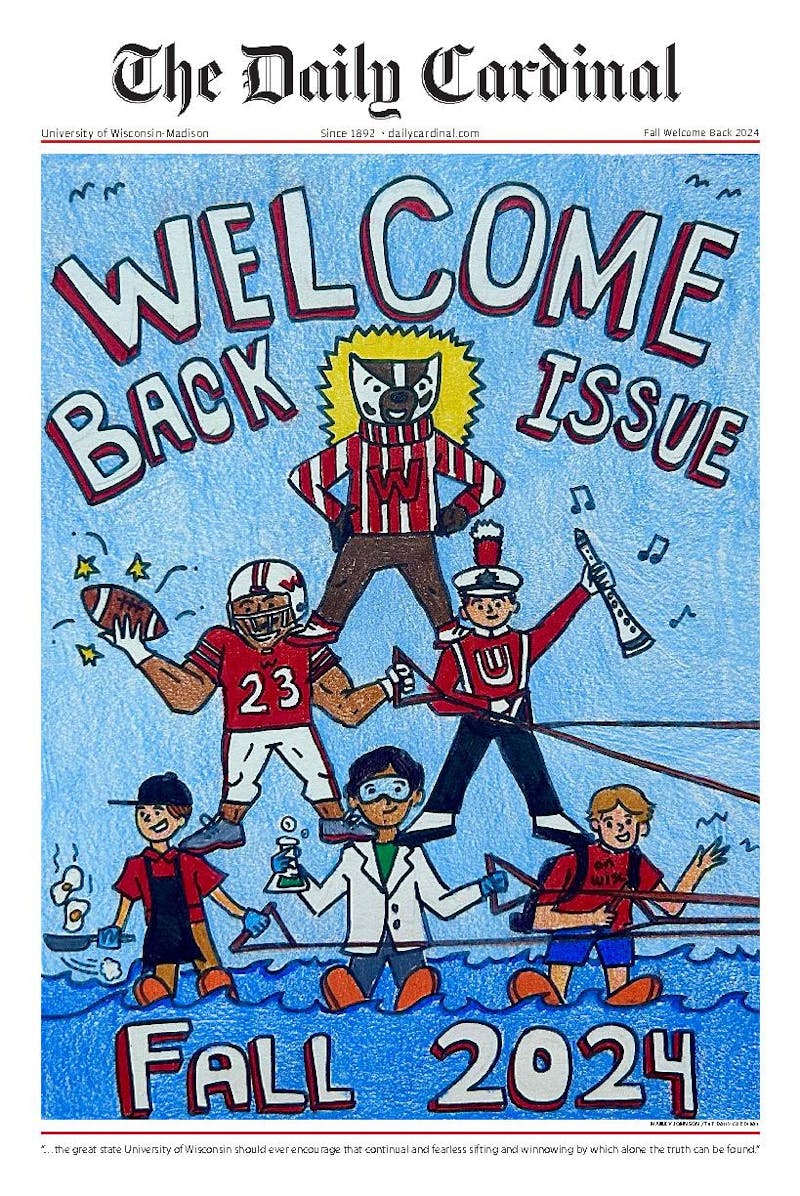As you venture out from the warmth of the indoors, a wind tears through your clothing. It may chill you to the bone, but even now that wind is powering the heaters that protect your home from the frigid air.
Madison Gas and Electric recently incorporated wind power, along with coal and natural gas to power Madison and the surrounding area. In the summer of 1999 MG&E activated 17 new wind turbines in Kewaunee County, near Green Bay, Wis.
'[Those] wind turbines now account for about 3 percent of the residential area and about 1 percent of the total power used in the Madison area,' said Laura Williams, MG&E's market development manager.
Producing about 23 million kilowatt-hours per year, these wind turbines are helping to keep MG&E from relying on one source of power.
'MG&E relies on mainly coal, but also natural gas and now wind for the majority of the power produced,' Williams said.
Local wind power consists of using natural wind to rotate the blades on a large wind turbine. Just as a fan uses power to rotate a blade to make wind, these turbines rotate due to wind and store the power. From the tip of the highest blade to the ground these turbines span 585 feet. Nonetheless, the turbines are about as quiet as a home refrigerator and generate enough power to have an effect on power in residential and commercial areas.
This type of power is renewable, and almost completely nonpolluting. According to MG&E it will also be cost effective for use at-large.
Currently wind power is more expensive for the public to use than coal or natural gas. MG&E's basic rate is 5.75 cents per kilowatt-hour, but customers must pay a bit more to get wind power.
'Our customers voluntarily pay a green pricing rate that is 3.3 cents per kilowatt-hour [more than the base rate] for the use of wind power,' Williams said.
The cost of wind power could be reduced if there were more wind turbines in use, but other factors such as geographic location, can figure into the cost.
'Wind power could easily be cheaper than coal right now,' said Richard Shaten, faculty associate at the UW-Madison Institute for Environmental Studies. 'The use of wind power is site specific, and in the Midwest we have a very optimal site for harvesting wind power. Certain areas of the upper Midwest have very good wind resources because of the topography. The long, flat open plains do not obstruct the wind [as it approaches].'
Wind power is just one of many minimal-polluting forms of energy that are being researched.
In Arizona and Texas, which receive about 40 percent more sunshine on average than the Midwest, solar power is being used significantly more than wind power.
Debates on land usage have hindered the expansion of wind farms. Many people think that the land would best serve as parkland or housing'anything other than towering turbines.
Regardless of the aesthetics of wind farms, some see their expansion as a necessary step to conserve money.
'The money we pay in environmental bills to stop global warming caused by carbon dioxide produced by coal could be avoided if we switched to an alternate power source that does not pollute our air and make our taxes higher,' Shaten said.
Wind farms also pay dividends to farmers. Just like any other crop, wind power is a source of income. By selling the power from one's land, a farmer can drastically increase his income.
'Farmers can collect thousands of dollars per year in land-use fees from the power company,' Shaten said.
Even with the immense turbines scattered across hundreds of acres, traditional crops can be planted right next to those hefty turbines.
MG&E is not looking to expand its wind power options because of a moratorium on building wind turbines and local zoning laws, but the impediments are not stopping renewable-energy supporters. Forms of solar energy are also a hot topic.
'We are currently investigating solar photovoltaic power for use in the future,' said Williams.
Whatever source people choose to tap for low-polluting energy, it is only a matter of time before they usurp traditional fuels as the top sources of energy.





